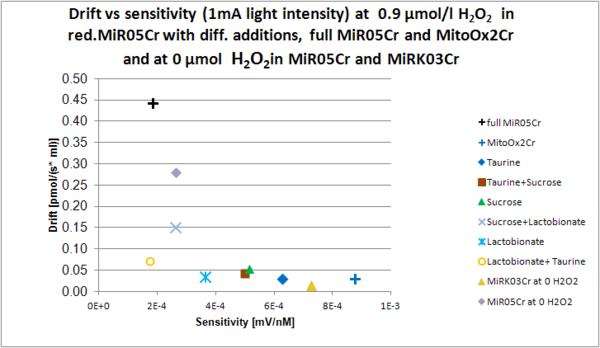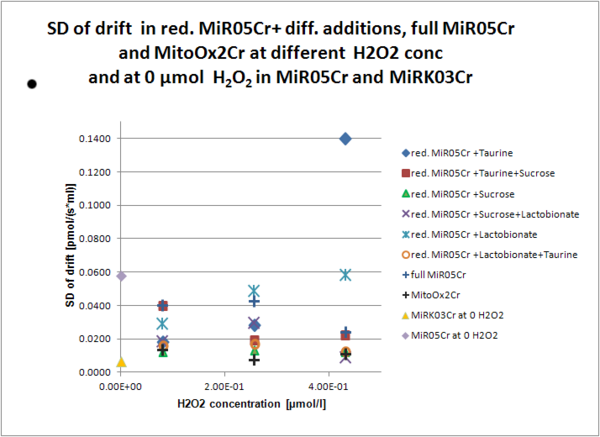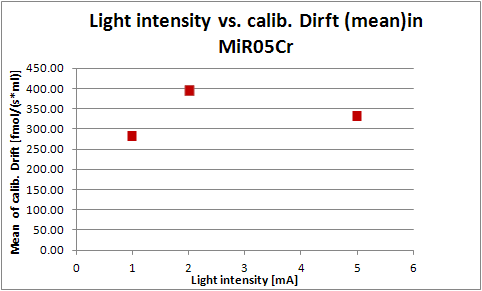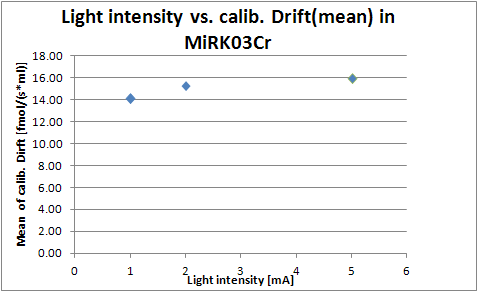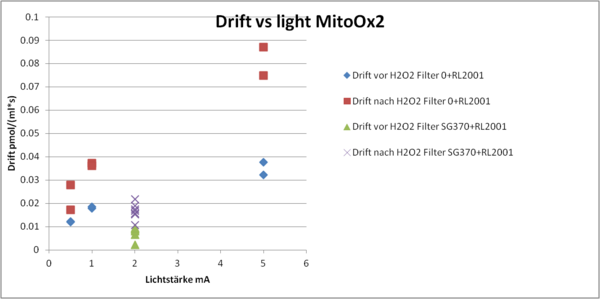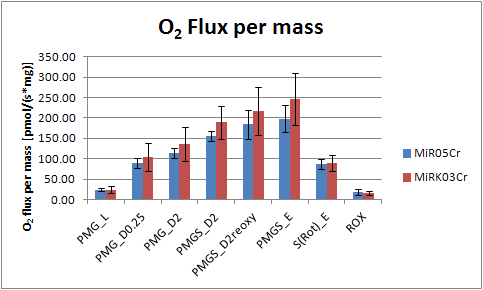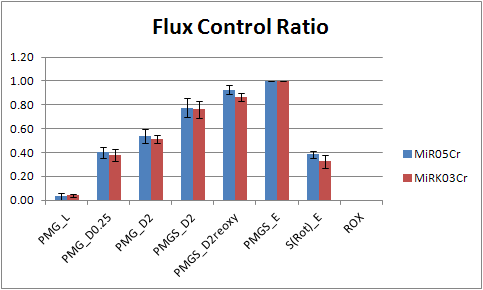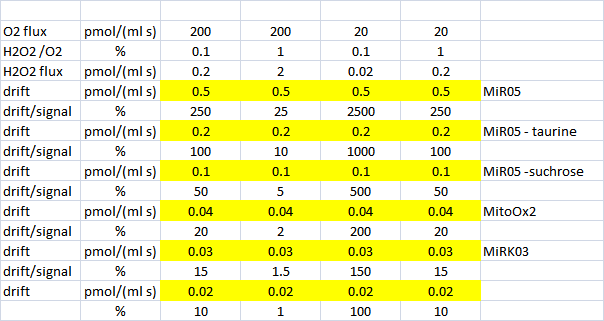Difference between revisions of "Talk:Amplex UltraRed"
| Line 85: | Line 85: | ||
== Popular Bioblast page == | == Popular Bioblast page == | ||
[[Amplex red]] has been accessed more than | [[Amplex red]] has been accessed more than | ||
:* | :* 20,000 times (2015-08-11) | ||
:* 10,000 times (2015-04-27) | :* 10,000 times (2015-04-27) | ||
:* 5,000 times (2014-05-29) | :* 5,000 times (2014-05-29) | ||
Revision as of 12:00, 11 August 2015
Media
See Krumschnabel 2015 Methods Mol Biol, Tretter 2012 Free Radic Biol Med, Komary 2010 Biochim Biophys Acta.
Media with high antioxidant activity compete with HRP and partially consume H2O2 before it can react with Amplex (R) (Ultra)Red to form the active fluorophore resorufin. This was shown by comparing
- the sensitivity as determined by H2O2 additions to different media containing HRP and Amplex (R) UltraRed;
- the sensitivity as determined by addition of the actual fluorophore resorufin to the same media (signal change per added resorufin); the sensitivity is signal change per added H2O2 or resorufin.
The sensitivity, as determined by addition of H2O2, is much higher in a simple phosphate buffer compared to media with strong antioxidant capacity. In contrast, this is not the case for the sensitivity with respect to resorufin.
A chemical background drift, which is always observed for the Amplex /HRP system, is independent of the H2O2 sensitivity versus the same (absolute) drift expressed as (calibrated) "apparent H2O2 production" will be higher in a medium with low H2O2 sensitivity as compared to a medium with high H2O2 sensitivity.
As expected some traditional KCl based media, similar to those used in ... showed a far higher sensitivity against H2O2 addition than MiR05, while some experiments indicated a lower respiration.
Comparison MiR05Cr to MiRK03Cr
Instrumental settings
- Amp. Gain 1000
- Light intesity variable: 1 mA, 2 mA and 5 mA
- Configuration O2k-Fluo sensor always the same: O2k P1: Sensors B-0111/B-0082; O2k P2: Sensors B-0119/B-0117; O2k P3: Sensors A-0004/B-0112; O2k P4: Sensors A-0087/A-0088.
Media
- MiR05Cr
- MiRK03Cr: KCl 130 mM, HEPES free acid 20 mM, KH2PO4 10 mM, MgCl2 3 mM, EGTA 0.5 mM, BSA 0.1%, pH=7, add 120 mg Creatine to 40 ml buffer. After thawing MiRK03 a preciptate was observed, which was dissolved after 20 min shaking.
Titrations
- 10 µl Amplex UltraRed (stock: 1 mM -> 5 µM final in chamber)
- 4 µl HRP (stock: 500 U/ml -> 1 U/ml final in chamber)
- 2*10 µl of 56,32 µM H2O2 solution
Results/Figures
Drift vs Sensitivity:
Fig.6
Fig.7
--> Drift and sensitivity at least as good as MitoOx2 (=MiRK02)
Drift vs light intensity
Fig.14 and Fig. 15
--> MirK03, MiR05: drift not dependent on light intensity ( 1 to 5 mA)
compare to "MitoOx2":
Evaluation of respirometry in MiR05Cr versus MiRK03Cr (N=2):
Titrations
- 10 µl Amplex UltraRed (stock: 1 mM -> 5 µM final in chamber)
- 4 µl HRP (stock: 500 U/ml -> 1 U/ml final in chamber)
- 2*5 µl of 28.16 µM H2O2 solution : 0 µM, 0.07040 µM, 0.1406 µM
Fig.16 and 17
Fontanam 16:22, 6 August 2013 (CEST)
Popular Bioblast page
Amplex red has been accessed more than
- 20,000 times (2015-08-11)
- 10,000 times (2015-04-27)
- 5,000 times (2014-05-29)
